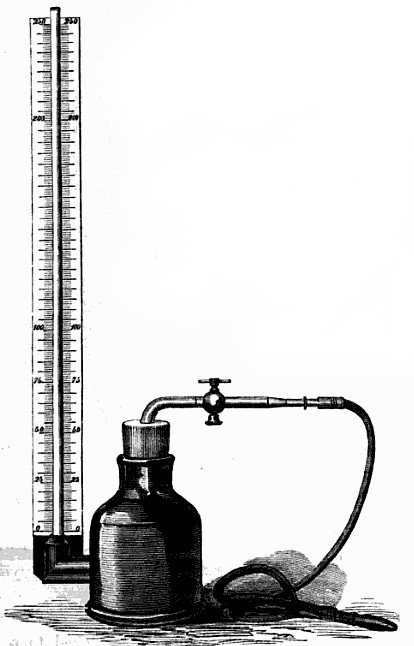From “A Treatise on Hygiene with special reference to the military service”, by William Alexander Hammond (Surgeon-General, U.S. Army.), published 1863, page 47.
“The respiratory power of an individual may be ascertained by the cardiometer or haemodynamometer. The former, modified somewhat for its present use, is represented in figure 8. It consists of an iron bottle, having a hollow arm at one side, communicating both with the cavity of the bottle and with a glass tube, open at both ends, to which a graduated scale is attached. The mouth of the bottle is closed with a tight-fitting cork, through which a brass tube is passed. This tube is connected with one piece of India-rubber, having a mouthpiece. Sufficient mercury is placed in the bottle to reach the zero on the scale, and upon applying the mouth to the end of the tube, and breathing through it, the mercury rises in the glass tube. Several points must be observed in using this instrument. The joints must all be air-tight, and, above all, care must be taken to exert only the muscles of the chest, and not those of the mouth and cheeks. This instrument only measures the expiratory power.”
